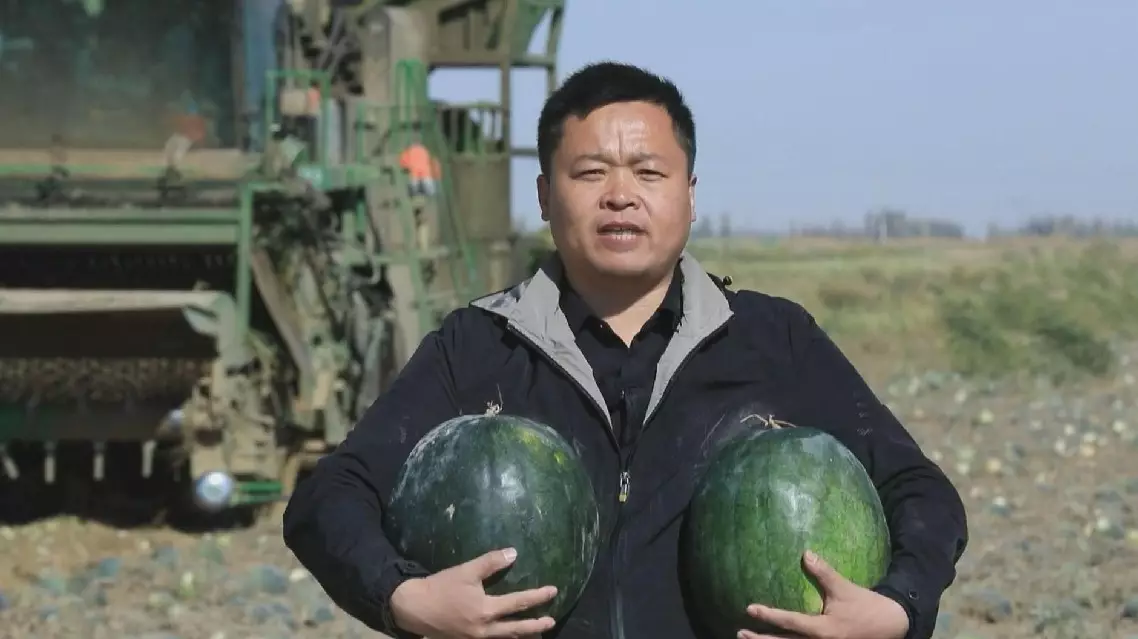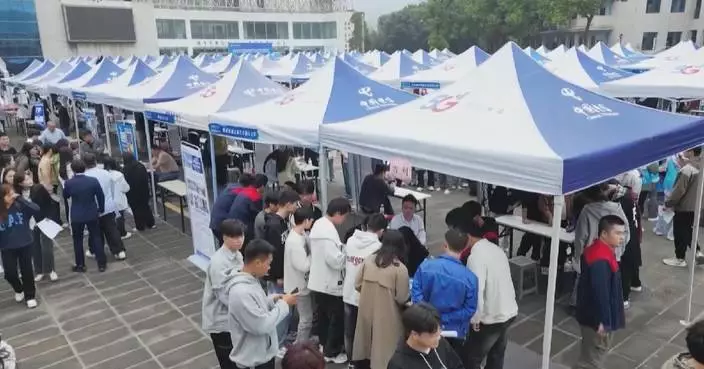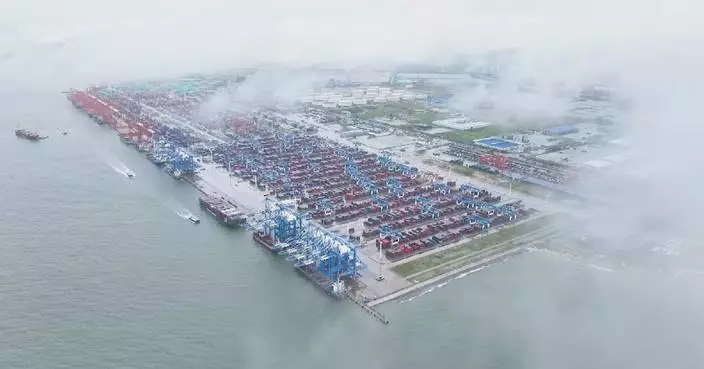Planting watermelons in the Taklimakan Desert, China's largest desert, has become a new way of achieving both sand control and raising incomes in Qiemo County of northwestern Xinjiang Uygur Autonomous Region.
The desert county of Qiemo in Bayingolin Mongolian Autonomous Prefecture planted a variety of seed-producing watermelon for the first time in May, and is harvesting over 1,730 hectares of watermelons.
The seeds of the watermelons will be used to make guazi, or baked watermelon seeds, a popular snack in China.
"I'm very glad to harvest such big watermelons. The yield per mu (0.067 hectares) is around 120 kilograms, and we can sell the watermelons for 15 to 20 yuan per kilogram," said local farmer Li Wenbin.
Agricultural technicians made great efforts in upgrading the land quality in the Taklimakan Desert.
"We used four tons of manure from cows and sheep on each mu of land, where we also used biological ways including bacteria to ameliorate the land quality. And then we have harvested great seed-producing watermelons. Each watermelon can produce more than 350 high-quality seeds on average," said Liu Yu, director of the development service center under the Qiemo County Bureau of Agriculture and Rural Affairs.

Watermelon-planting in China's largest desert helps sand control, boosts incomes
A wide variety of equipment with advanced technologies have made debut at the sixth Grain Trade Conference which opened in Wuhan, central China's Hubei Province, on Friday, offering technological support for food security in the country.
The trade conference captures visitors' attention as more than 3,000 companies showcase their latest products incorporated with cutting-edge technologies.
From the digital cloud platform monitoring of paddy rice fields and automatic AI equipment checking grain condition to smart robots stacking, loading and carrying goods at warehouse, new equipment showcased at the trade conference suggests that the digitalization of the whole industrial chain of grain including the production, purchase, storage, processing and sales processes of grain is becoming a new trend which will contribute to stronger food security of the country.
"Applying digital technologies can enable people to monitor grain conditions, temperature, and pest infestations in real-time, which will help reduce grain spoilage," said Shao Hui, the person in charge of Inspur Electronic Information Industry Co., Ltd., a leading server manufacturer in China.
The application of digital technologies will also reduce excessive waste and loss of grain to offset the cost of post-production loss of grain, Shao said.

High-tech equipment debuts at Grain Conference, protector of food security










